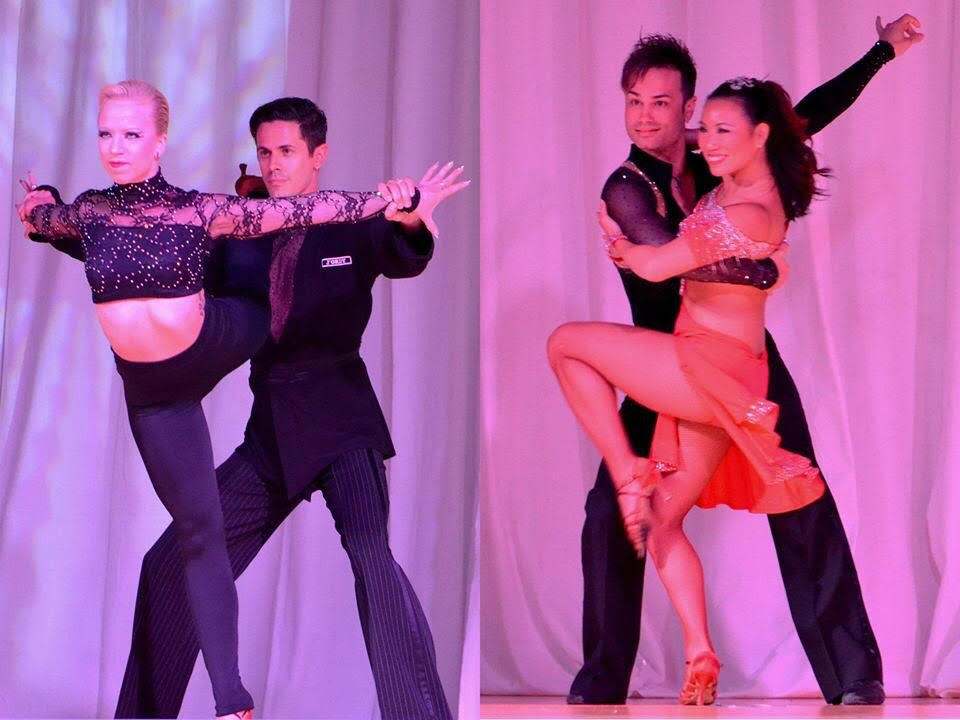How to Laugh at Mistakes (And Why You Should)

I’ve been writing a lot about how to make friends through dancing lately. But you know, one thing I’ve avoided talking about (because it required it’s own article) was how important it is to not get too hung up on creating the perfect image of yourself.
For most people, that probably flies in the face of every piece of advice they’ve ever been told about making connections. Countless books have been written about how to make you more suave, more sophisticated, more of a gentleman (or gentlewoman), etc, etc.. And I’m not saying those things aren’t important. But still, something is missing.
Here’s the thing: There will always be more ways you can improve yourself – that will never change. But what CAN change is the way you perceive yourself when you behave less than perfectly.
Personally, I find the dancers I enjoy the most are not the ones with the most perfect technique, but those who make mistakes – and know how to laugh and play off them. Because while good technique is fun, only the confidently authentic can laugh at themselves. And that is infinitely more enjoyable.
I don’t know your upbringing, but chances are you were encouraged to never make mistakes. Good behaviour and bad behaviour was spelled out for you, and falling into the latter resulted in punishment, often with little further discussion. This in my opinion creates a perfectionist attitude, where any faux pas is considered a terrible sin.
There’s a few different ways your mind can go on this. One is by fortune telling: You predict how others will behave around you if you mess up, convinced they are judging you behind their smiles. The mind then becomes hyper-focused on any detail that seems to confirm your suspicions, so you make yourself “right”.
Another is by downplaying the positive: I have students who simply can’t hear the genuine complements I pay them, responding with an automatic, “yes, but…” They assume any compliments are just me “being nice”.
A third is amplifying the negative: The tinniest misstep becomes a unforgivable error in your eyes, when your partner may not even have noticed.
Now that we are familiar with these mental patterns, how can we counter them? It’s not enough to simply block out these thoughts – if we truly want to make them go away, we must embrace new ones, which acknowledge making mistakes as a sign of humanity, not of a “bad” person.
For example, if your particular demon is fortune telling, use it’s own tactics against itself by daydreaming the opposite: Imagine that everybody is so happy to dance with you, or so focused on their own mistakes (almost always true) that they don’t even notice when you make yours – or if they do, they forget almost immediately afterwards.
If you downplay the positive, reverse the flow and start really listening to the compliments paid to you. Don’t deflect them, but simply say “thank you”. If they are genuine (and most of them probably are), focus on that, and if you can, allow a small amount of pride to come.
And if you amplify the negative, train yourself to be ready for what comes next in the dance, rather than ruminating over what just happened. By changing your focus, you prevent one mistake from turning into three or four.
To paraphrase the owner of one studio: “It’s easy to come up with reasons why it was a bad dance – think of some reasons why it was a GOOD one.” After each dance, or lesson, take some time to think of things you did well, even if it was done by omission: “I didn’t lose my balance as much as usual, I didn’t collapse my frame, etc.”
“But if I don’t spend time thinking about my mistakes, I won’t improve on them!” You say. Sure, think about them – but take the emotion and judgement out of it. Once that’s gone, there’s only what you need to do to make it better next time.
Try out these tips, and remember that they won’t just help you become a better dancer, but a more likeable person as well. To err is human whether we like it or not, so forgive your errors, and keep going – we’re all rooting for you.
About the Author
Ian Crewe has been dancing ballroom for over 18 years, and has a Licentiate in American smooth and rhythm. His passion for dance eventually led him to blogging and the World Wide Web. Ian currently teaches at the Joy of Dance Centre, Toronto, ON, Canada.

